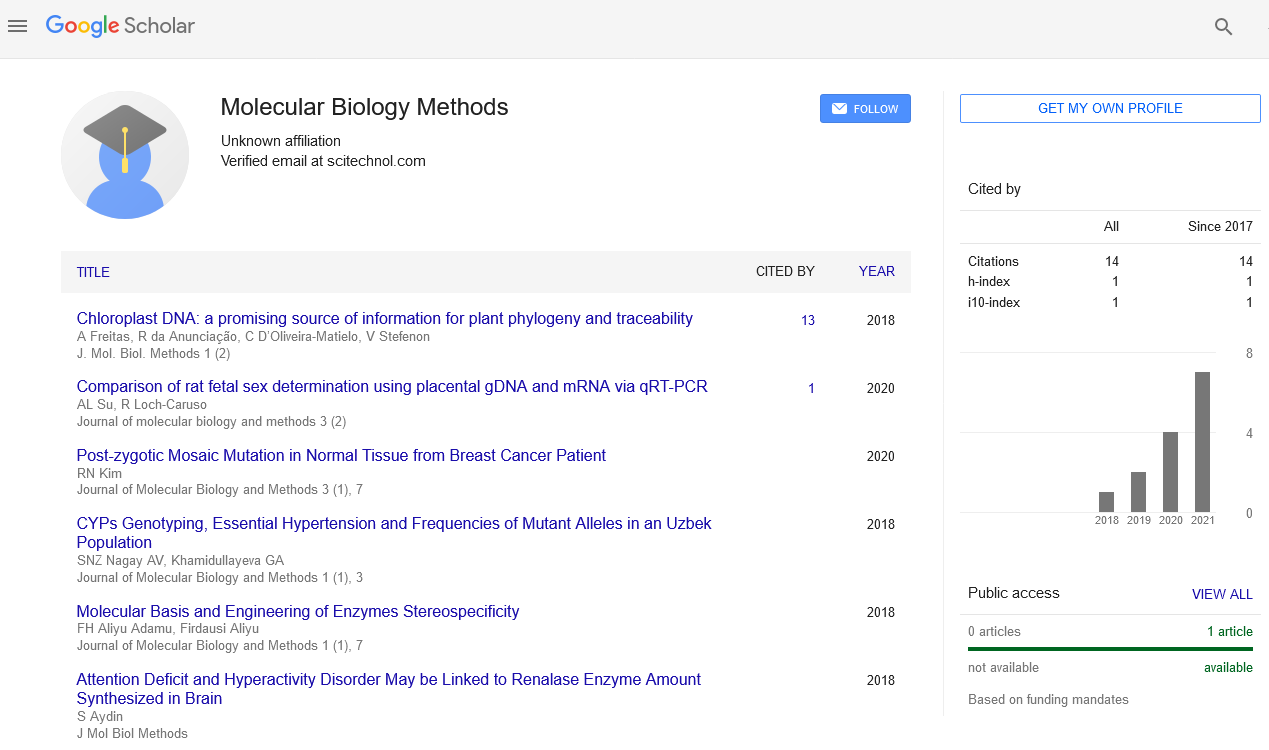Perspective, J Mol Biol Methods Vol: 6 Issue: 1
Apoptosis: Cell death and Its Significance in Health and Disease
Jiao Sabry*
Department of Biomedical Sciences, University of Guelph, Ontario, Canada
*Corresponding Author: Jiao Sabry
Jiao Sabry, Department of Biomedical Sciences, University of Guelph, Ontario, Canada;
E-mail: jiaosabry@sug.ca
Received date: 20 February, 2023, Manuscript No. JMBM-23-94725;
Editor assigned date: 22 February, 2023, PreQC No. JMBM-23-94725 (PQ);
Reviewed date: 09 March, 2023, QC No JMBM-23-94725;
Revised date: 16 March, 2023, Manuscript No. JMBM-23-94725 (R);
Published date: 23 March, 2023, DOI: 10.4172/JMBM.1000126
Citation: Sabry J (2023) Apoptosis: Cell death and Its Significance in Health and Disease. J Mol Biol Methods 6:1.
Abstract
Description
Apoptosis, also known as programmed cell death, is a fundamental biological process that plays an important role in maintaining cellular homeostasis and regulating tissue development. It is a highly orchestrated and tightly regulated process that results in the controlled death of cells, with specific molecular mechanisms and signaling pathways involved. Apoptosis has profound implications in various physiological and pathological conditions, including embryogenesis, tissue remodeling, immune response, cancer, neurodegenerative diseases, and many other diseases. Apoptosis involves a series of molecular events that lead to cellular self-destruction. The key components in the apoptotic pathway include pro-apoptotic and antiapoptotic proteins, as well as caspases, which are a family of proteases that act as central effectors of apoptosis. The intrinsic pathway of apoptosis is initiated by cellular stress, such as DNA damage or mitochondrial dysfunction, leading to the release of pro-apoptotic proteins from mitochondria and activation of caspases. The extrinsic pathway is triggered by binding of death ligands, such as Fas ligand or Tumor Necrosis Factor (TNF), to their respective receptors on the cell surface, leading to the activation of caspases through a cascade of events. Both intrinsic and extrinsic pathways converge on the activation of caspase-3, which is responsible for the proteolytic cleavage of cellular substrates and execution of apoptotic cell death. Apoptosis is tightly regulated by a balance between pro-apoptotic and anti-apoptotic proteins, which determine the fate of the cell. Bcl-2 family proteins, including Bcl-2, Bcl-xL, and Mcl-1, are anti-apoptotic proteins that prevent the release of pro-apoptotic proteins from mitochondria and inhibit caspase activation. On the other hand, proapoptotic proteins, such as Bax, Bak, Bid, and Bad, promote Mitochondrial Outer Membrane Permeabilisation (MOMP) and release of cytochrome c, triggering caspase activation. The ratio between pro-apoptotic and anti-apoptotic proteins determines the sensitivity of cells to apoptosis and plays a key role in the regulation of apoptosis.
Implications of apoptosis in health and disease
Apoptosis has diverse implications in both health and disease. In normal physiological processes, apoptosis is essential for tissue development and remodeling, immune response, and maintenance of cellular homeostasis. During embryogenesis, apoptosis is involved in shaping the developing organs and tissues, as well as eliminating excess or damaged cells. In adult tissues, apoptosis is required for tissue homeostasis and turnover, allowing for the removal of aged or damaged cells and the renewal of tissues. Apoptosis also plays a major role in the immune response by eliminating infected or abnormal cells, and defects in apoptosis can lead to immune system dysregulation. Dysregulation of apoptosis has been implicated in various pathological conditions, including cancer, neurodegenerative diseases, autoimmune diseases, and cardiovascular diseases. In cancer, defects in apoptosis pathways can result in uncontrolled cell proliferation and survival, leading to tumor formation and progression. In neurodegenerative diseases such as Alzheimer's and Parkinson's disease, abnormal accumulation of misfolded proteins can trigger apoptosis in neurons, leading to neurodegeneration. In autoimmune diseases, impaired apoptosis can result in the survival of autoreactive immune cells, leading to immune system dysregulation and tissue damage. In cardio vascular diseases, apoptosis can play a role in the progression of atherosclerosis, where the death of smooth muscle cells in the arterial walls can contribute to plaque formation and instability.
Conclusion
Apoptosis is a fundamental biological process, helps in maintaining cellular homeostasis and regulating tissue development. Advances in immunochemical techniques have greatly contributed to the understanding of apoptosis and its implications in health and disease. By elucidating the mechanisms, regulation, and consequences of apoptosis, these techniques have opened up opportunities for prevention and intervention strategies in various disease conditions. Further advancements in immunochemical techniques will continue to enhance the understanding of apoptosis and its significance in different biological processes, leading to potential therapeutic applications in the future.
 Spanish
Spanish  Chinese
Chinese  Russian
Russian  German
German  French
French  Japanese
Japanese  Portuguese
Portuguese  Hindi
Hindi 